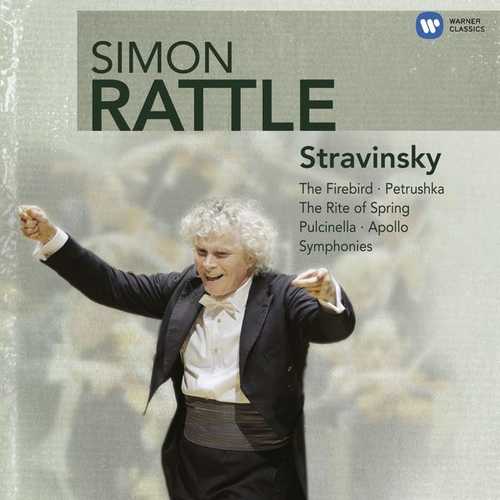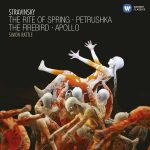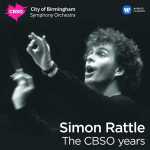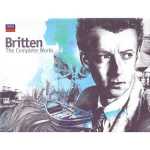
Composer: Igor Stravinsky
Performer: Felix Kok, Ulrich Heinen, Peter Cole, John Tattersdill, Jeremy Ballard, Peter Donohoe, Robert Johnston, Elaine Donohoe, John Fryatt, Malcolm King, Jennifer Smith, Northern Sinfonia, Michael Collins
Orchestra: City of Birmingham Symphony Orchestra, Berliner Philharmoniker
Conductor: Sir Simon Rattle
Number of Discs: 4
Format: FLAC (tracks)
Label: Warner
Catalogue: 2427542
Release: 2009
Size: 996 MB
Recovery: +3%
Scan: cover
CD 01
The Firebird – Ballet (1910 version)
01. Introduction and Scene 1 – Kashchei’s enchanted garden
02. Dance of the Firebird
03. The Princesses’ game with the golden apples
04. Sudden appearance of Ivan Tsarevich
05. Dance of Kashchei’s retinue under Firebird’s spell
06. Lullaby (Firebird)
07. Scene 2 – Disappearance of the palace and dissolution of Kashchei’s enchantments – Conclusion
08. Scherzo a la Russe
Four Studies (1952 version)
09. Danse
10. Excentrique
11. Cantique
12. Madrid
13. Scherzo à la russe (orchestral version, 1943-4)
CD 02
Apollo – Ballet en deux tableaux (1947 revised version)
01. Naissance d’Apollon
02. Variation d’Apollon (Apollon et les Muses)
03. Pas d’action (Apollon et les trois Muses: Calliope, Polymnie, et Terpsichore)
04. Variation de Calliope (l’Alexandrin)
05. Variation de Polymnie
06. Variation de Terpsichore
07. Variation d’Apollon
08. Pas de deux (Apollon et Terpsichore)
09. Coda (Apollon et les Muses)
10. Apothéose
The Rite of Spring
Part 1
11. Introduction – Les augures printaniers – Danse des adolescentes – Jeu de rapt
12. Rond printanières – Jeux des cités rivales – Cortège de sage
13. Le sage – Danse de la terre
Part 2
14. Introduction
15. Cercles mystérieux des adolescentes
16. Glorification de l’élue – Évocation des ancêtres – Action rituelle des aancêtres
17. Danse sacrale (l’élue)
CD 03
Petrushka – Scènes burlesques en quatre tableaux,
01. Fête populaire de la semaine grasse
02. Le tour de passe-passe – Danse russe
03. Petrushka – Scènes burlesques en quatre tableaux, Deuxième tableau: Chez Petrushka
04. Chez le maure – Danse de la ballerine
05. Valse ( La ballerine et la maure)
06. Fête populaire de la semaine grasse
07. Danse des nounous
08. Paysan et l’ours
09. Bohémien et marchand malhonnête
10. Danse des cochers et des palefreniers
11. Les déguisés
12. Le rixe: La maure et Petrushka
13. Mort de Petrushka
14. Polic et ‘enchanteur – Vocifération du double de Petrushka
Symphony in 3 movements
15. I. [crotchet] = 160
16. II. Andante ([quaver] = 76) – Interlude (L’istesso tempo)
17. III. Con moto ([crotchet] = 180)
18. Symphony of Winds
CD 04
Pulcinella
01. Overture
02. Mentre l’ erbetta pasce l’ agnella (Tenor)
03. Contento forse vivere (Soprano)
04. Con queste paroline (Bass)
05. Sento dire no’ nce pace (Trio)
06. Una te falan zemprece (Tenor)
07. Se tu m’ ami (Soprano)
08. Gavotta
09. Variation 1
10. Variation 2
11. Pupillette fiammette (Trio)
Two Suites (1987 – Remaster), Suite No. 1
12. I. Andante
13. II. Napolitana
14. III. Española
15. IV. Balalaïka
Two Suites (1987 – Remaster), Suite No. 2
16. I. Marche
17. II. Valse
18. III. Polka
19. IV. Galop
20. Rag-Time for eleven players
Ebony Concerto
21. I. Allegro moderato
22. II. Andante
23. III. Moderato – Con moto
Agon (extracts)
24. Gailliarde
25. Coda
26. Interlude
27. Four Duos
28. Four Trios
On the face of it one would have thought that there was little in common between Igor Stravinsky (1882-1971) and Benjamin Britten (1913-1976), two interesting facts prove otherwise.
Britten, born in Lowestoft in Suffolk on 22nd November (St. Cecilia’s Day), had already and studied with Frank Bridge by the time he went to Gresham’s School in Holt, Norfolk, in September 1928. The Master in charge of music on meeting him remarked “Oh, you’re the boy who likes Stravinsky!” Today that remark might be considered a compliment, at that time Stravinsky was reviled as THAT composer who had perpetrated the outrage called “The Rite of Spring” fifteen years earlier.
The funeral service for Stravinsky, who died on 6th April 1971 in New York, was held as he had requested in Venice nine days later and he was laid to rest near his friend and ballet impresario, Serge Diaghilev, on the Island of San Michele. Britten, too, had a great love for Venice as can be heard in his last opera based on Thomas Mann’s “Death in Venice”.
Both composers are also high on Sir Simon Rattle’s list of favourite composers. In 2003 he and his Berlin Philharmonic gave workshops and a performance of Stravinsky’s Rite of Spring to the city’s disadvantaged children and as a past Artistic Director of Britten’s beloved Aldeburgh Festival he has conducted many of his works including a number of those that had been found after the death of the composer.
The box of Stravinsky contains works from all parts of his musical life including six ballets; three major ones from his youth – The Firebird, showing the inspired palette for exotic colour learnt from his teacher, Rimsky-Korsakov, Petrushka (in its revised version of 1947) and The Rite of Spring; two in his Neo-Classical style – Apollo and Pulcinella and extracts from Agon which shows the influence of his studies of serial technique as expounded by Anton Webern. There are also a number of his works that were inspired by jazz.
The box of Britten contains besides the three great song cycles (Les Illuminations, Serenade for Tenor, Horn & Strings and Nocturne) the “War Requiem”, “Sinfonia da Requiem”, the ever popular “Young Person’s Guide to the Orchestra” and the most remarkable set of songs written in French when he was 15, “Quatre Chansons Françaises”.



